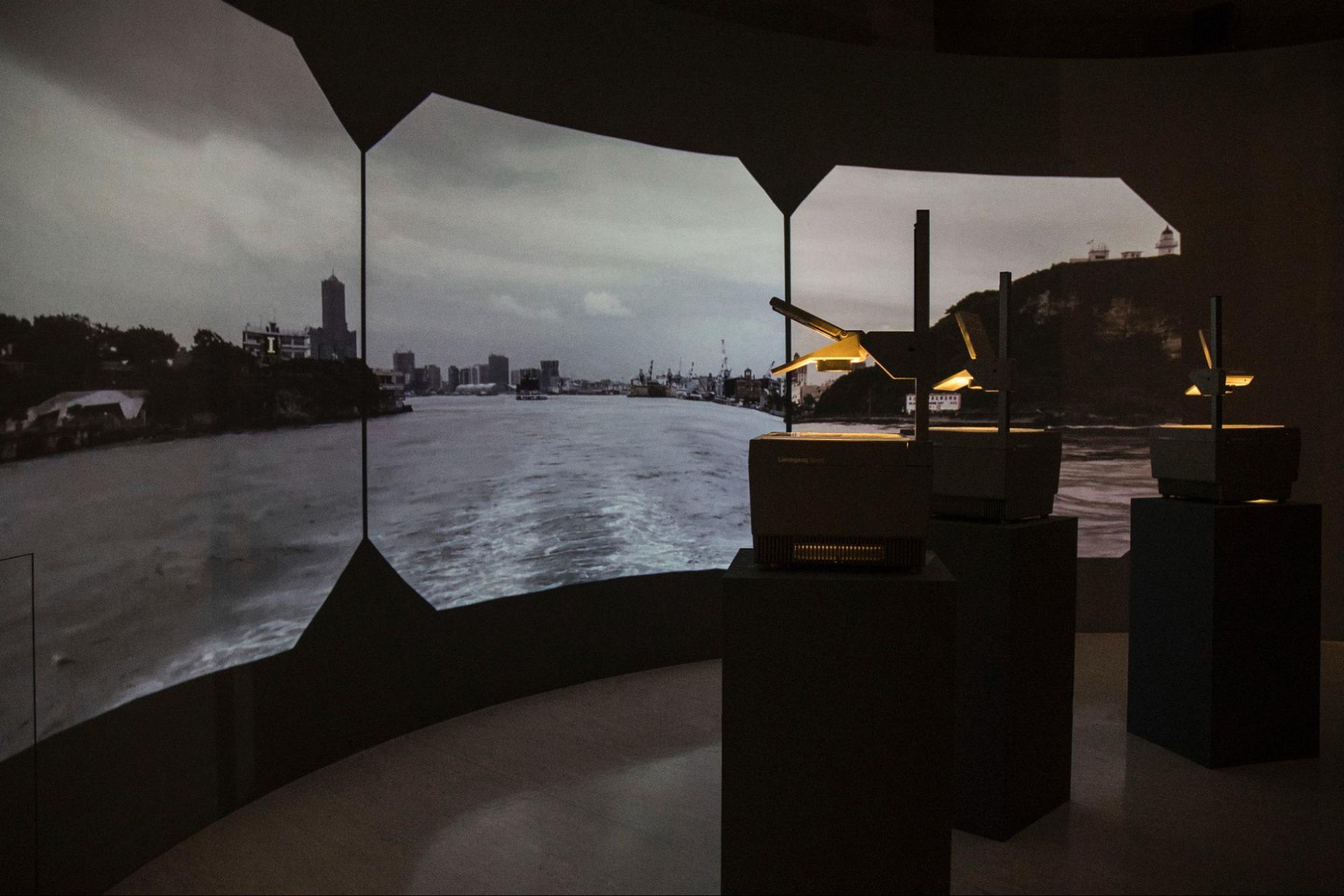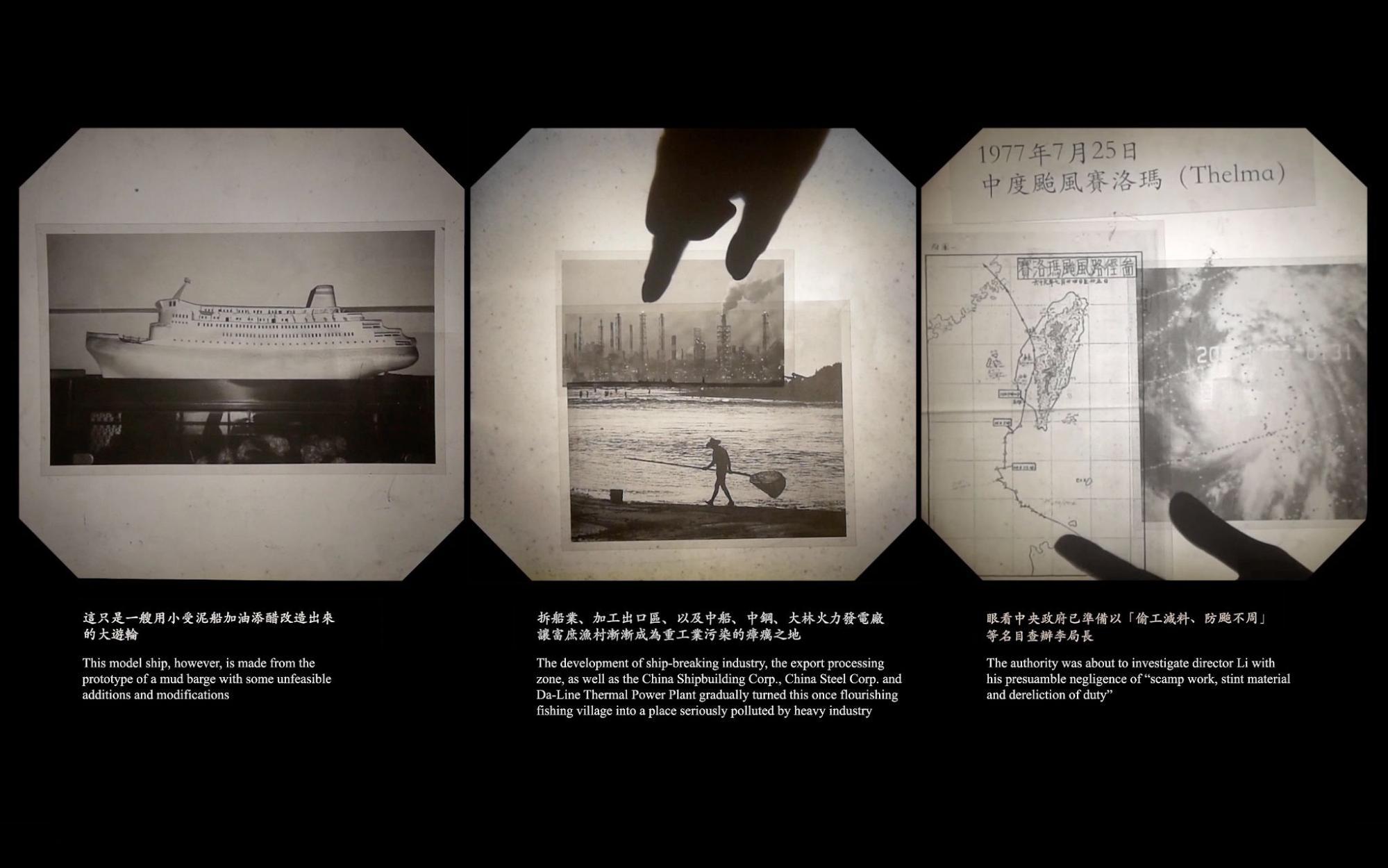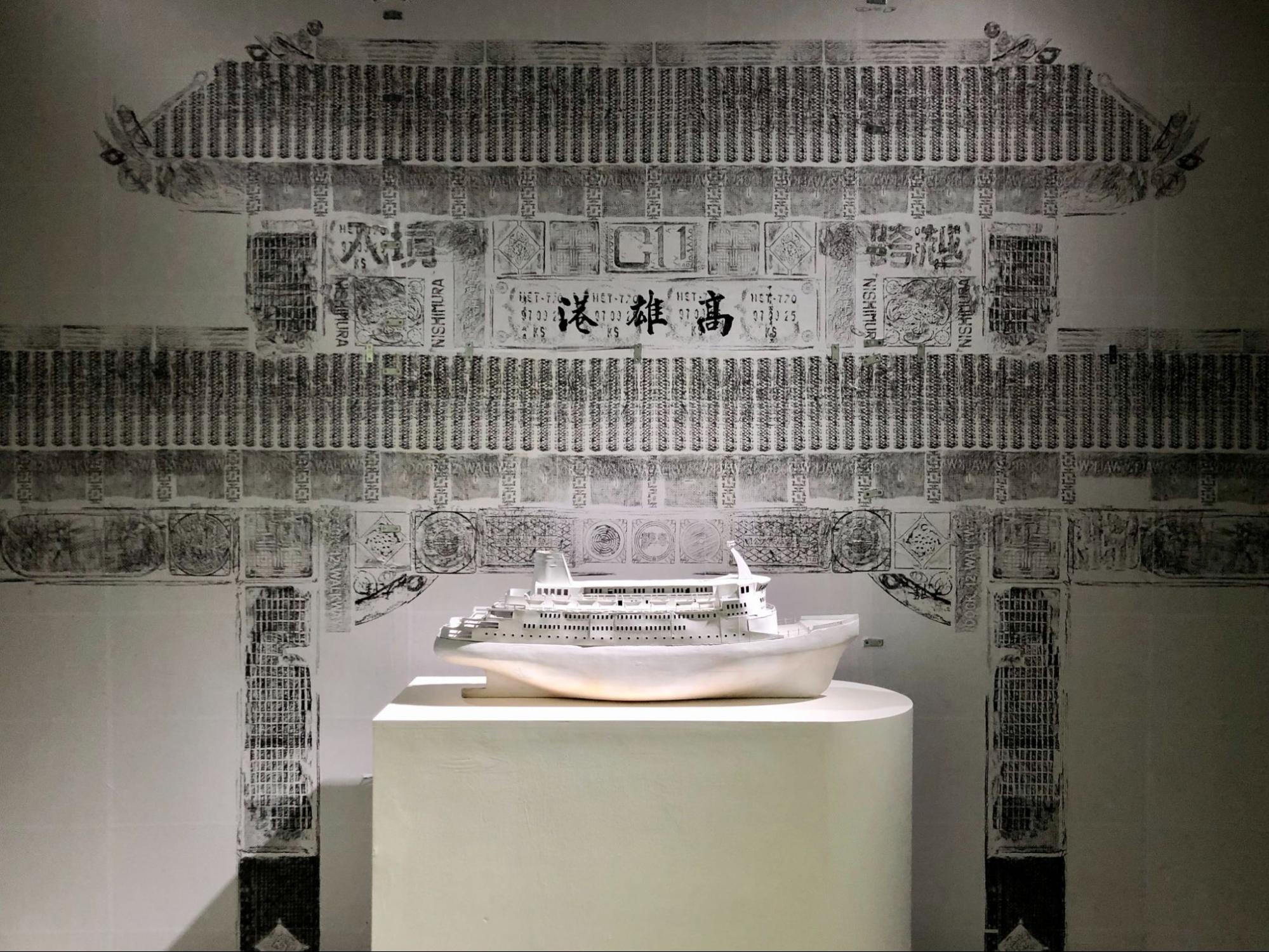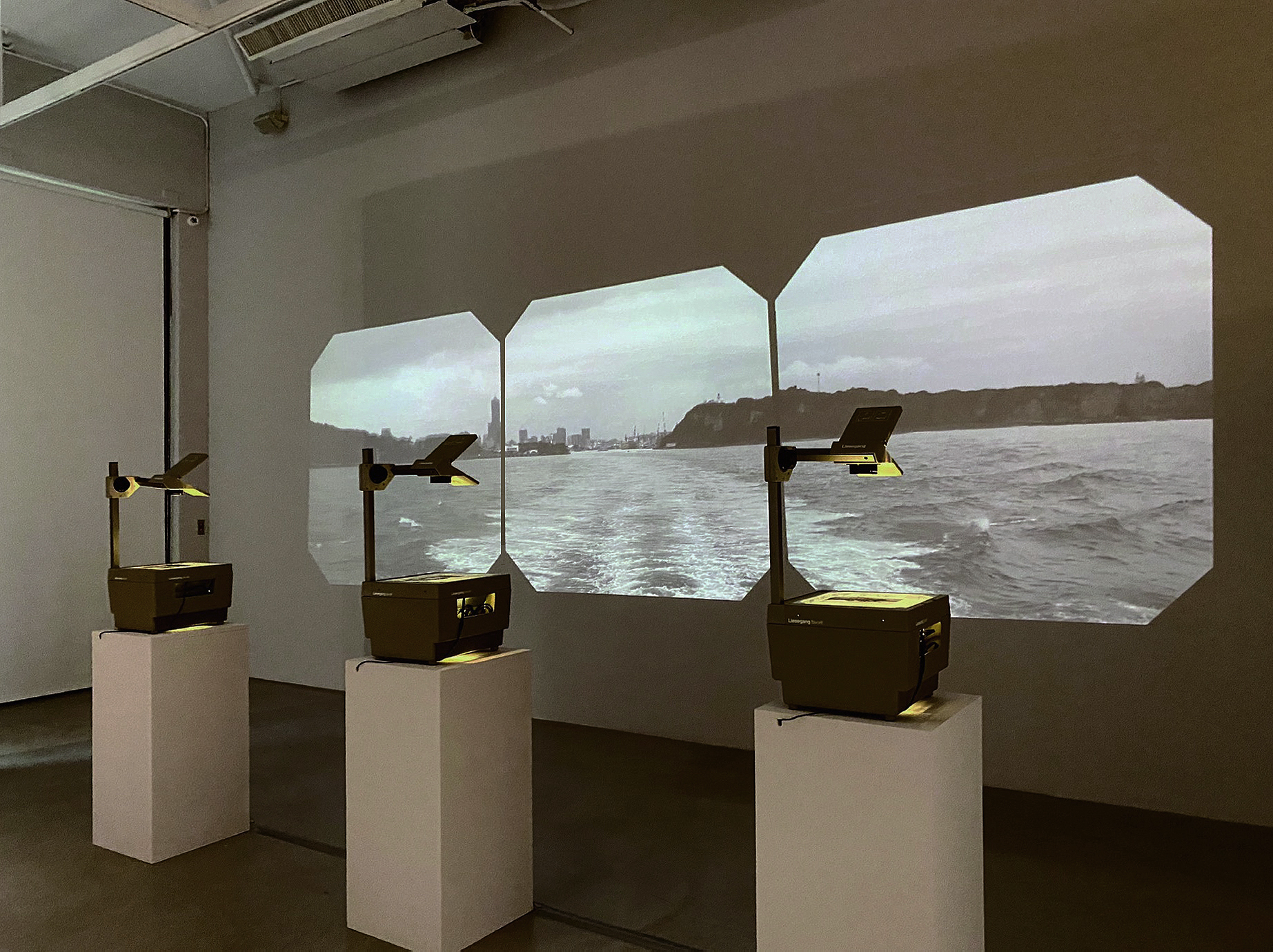Stephen Ramos

In the post-industrial port city landscape, art is often called upon to reimagine historic areas for new programs and possibilities. Art helps create civic spaces in abandoned urban port facilities, and helps to inform publics about local and transnational port city identities and heritage. Art can also be a methodology; a medium through which to explore the complexities of port cities’ pasts and envision their material futures. This new blog is inspired by Stephen Ramos’ recent research on port materiality, and his participation in networks of artists and urbanists seeking international port cultural engagement and exchange beyond mere commodity flows.
Port city waterfront regeneration in cities around the world has helped open once derelict, abandoned downtown port and industrial sites into thriving districts (Marshall 2001; Desfor et al. 2011). With over four decades of experience, there is now extensive port city evidence ranging from successful transformation of such sites into vibrant new cultural districts, to rather unimaginative, one-dimensional festival shopping spaces (Alemany 2019). One example is the Minato Mirai 21 district on the Yokohama waterfront in metropolitan Tokyo (Kim 2014). Part of this large business and tourist development included cultural programming, featuring Foreign Office Architects’ sinuous International Passenger Terminal Pier project. From the adjacent Zou-No-Hana Terrace, an international network of artists was launched, called Port Journeys, to address the opportunity for artists to help create meaningful waterfront cultural spaces and to collaborate/share internationally with other artists and urbanists. The founders described the network as “a platform for the promotion of community creation, this project’s pursuit is the autonomous development of creative inter-city exchange.” Such networks link cultural districts in historic urban port sites, from the Pier 2 Art Center in Kaohsiung, Taiwan to Exportdrvo in Rijeka, Croatia.
Recently, we formed a new international group of artists and urbanists as the collaborative Port Futures and Social Logistics, based on relationships established through the Port Journeys community. Together, we couple aesthetic investigations of ecological, social, and industrial flows with a renewed belief in art as a tool for situating belongingness within systems. A collective archive emerges as an inductive study of the material present. Our event PFSL01 celebrated Earth Day 2022 as the collaborative’s first virtual research summit and an online exhibition of the artists’ works. Each explored the port city as a platform for furthering global cultural dialog through art and urbanism. The exhibition uses the 4-D video medium to document fixity and flux, and the virtual platform unites the works amidst geographic distance and separation.
One member of the collaborative is Chang Chih Chung. Chang is a Taiwanese artist who lives and works in the southern port city of Kaohsiung. In 2020, the World Shipping Council ranked the Port of Kaohsiung as 15th in the world, and it recently won the 2021 World Ports Sustainability Program (WPSP) prize for Resilient Physical Infrastructure.
Chang’s contribution to PFSL01 was the Port of Fata Morgana project, which he describes as a:
“three-act play composed of family history and naval architecture: history of war; religions and beliefs; disasters in history and national planning. The film unveils the nearly-forgotten, brilliant history of what was once the third-biggest container port in the world: the Port of Kaohsiung…[it]seeks to restart conversations in this rust-belt city struggling with rising populism, and to figure out how to find hope again after the glory is gone. That so-called homeland became a “Fata Morgana” beyond the horizon – a complex mirage that’s even more fragmented, spectacular, rare and illusory.”

In his artist statement, Chang explains that he regards the ocean as a “worldview different from the current terrestrial civilization of the Anthropocene.” He interprets “contemporary phenomena in forms of interconnected waters, currents, and tides. For him, “water is the medium penetrating everything from the inner to the outer worlds, to embody the unstable state of transition, flow, and anti-subjectivity” corresponding to the subtropical monsoon climate of his Taiwanese homeland. His art practices deal with rapidly-changing environments through textural and spatial processes of investigation and collection, to interweave and reconstruct. Inspiration for the project came from a model ship that he built in his childhood, which he joined with his father’s shipbuilding history to explore larger issues of historic change in the port city.

Chang’s theme of “Fata Morgana” is based on the Italian phrase for forms that appear between sea and sky, just beyond the horizon. His use of multimedia moves easily between memory and dream; the personal, collective, and political; the historic and the artistic. It does not make authoritative historical claims, but like the best work on ports and cities, it invites the viewer’s imagination to take up the ideas and images he presents into our own experiences. For Chang, his childhood model ship—an object—inspires his own epic port city history poem. Similar perhaps to Fatma Tanış’s work on the port of İzmir, Turkey through explorations of writings, postcards and “cosmopolitan practices” (2022), these are examples of art and cultural documentations as methods in search of larger personal and place-bound meaning in port cities, beyond their more limited instrumentalization for urban redevelopment.
At the end of 2022, Chang will be based in the Netherlands for the next two years, where he will have a residency as part of the post-academic program at the Jan van Eyck Academie in Maastricht. There, his research will focus on sea-level rise, anti-fouling pollution, and underwater archaeology as creative methodology.

Source/Caption images (courtesy of the artist):
The Port of Fata Morgana is a multimedia video installation (36'18") that incorporates overhead projectors (OHPs), digital printing on A3 paper, coral stones, marine debris, readymades, scaffolds, anti-fouling paint, gesso & graphite on MDF, cyanotype on fabric, seawater, soil & incense ash mixed in paraffin wax, LED lights, and double channel HD video. The trilogy is composed of three chapters: Father’s Ship, Marshal of the Sea, and Glory of Kaohsiung.
More information on Chang Chih Chung’s work:
https://changchihchung.jimdofree.com
Specifications project ‘Port of Fata Morgana’ (2020):
https://changchihchung.jimdofree.com/port-of-fata-morgana-2020/
6-min demo: https://youtu.be/8ULsfT4qiak
Acknowledgement:
Stephen Ramos is an associate professor of urbanism in the College of Environment + Design at the University of Georgia. His research focuses on port cities, logistics, territory, and energy transition. He is author of Dubai Amplified: The Engineering of a Port Geography (Ashgate 2010; Routledge 2016), co-editor of Infrastructure Sustainability and Design (Routledge 2012), a founding editor of New Geographies (GSD/Harvard University Press), and an associate editor for Planning Perspectives.
This blog was peer-reviewed by members of the PortCityFutures community, and edited by the PortCityFutures editorial team: Carola Hein, Hilde Sennema, and Vincent Baptist.
References
Alemany, Joan (2019). “Port-City Relationship and Urban Waterfront Redevelopment.” PORTUS 38.
Desfor, Gene, et al. (2011). Transforming Urban Waterfronts: Fixity and Flow. London and New York: Routledge.
Kim, Na-Young (2014). “Waterfront Development and Cultural Policy in Yokohama City, Japan.” Journal of Navigation and Port Research 38(3): 291-298.
Marshall, Richard (2001). Waterfronts in Post-Industrial Cities. London and New York: Routledge.
Tanış, Fatma (2022). Urban Scenes of a Port City: Exploring Beautiful İzmir through Narratives of Cosmopolitan Practices. Doctoral Dissertation. TU Delft.
